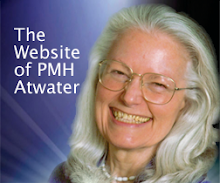IANDS HOUSTON CONFERENCE
The Conference IANDS held at the University of Texas M. D. Anderson Cancer Center in Houston , TX, October 25-28, 2006, was absolutely incredible! A dream come true for any and all connected with near-death experiences, on any level, in any manner. The theme, "Near-Death Experiences: 30 Years of Research," headlined a series of dynamic presentations - attended by the largest turnout we have ever had of medical physicians, nurses, counselors, and chaplains. Add to that experiencers and researchers and you have attendance figures of over 400 people! Please access the IANDS website for more details about this important event, and information about how to obtain CDs and DVDs of the various talks and panels: www.iands.org.
It is now time to do something about our lack of broad-based research and cross-cultural studies on the near-death phenomenon. We have come a long way, as evidenced by the Houston Conference, but we still have a long way to go. I have sent a proposal to IANDS with the suggestion that a "research packet" be prepared that can be supplied to any individual or group who wants to do research and/or data collection of near-death experiences, but is unclear as to protocol methods and reporting procedures. It is my hope that the idea catches on and something like a "research packet" emerges. The outline of what I suggested follows. Anyone who wishes to comment on this or who has further suggestions to make should contact IANDS directly, at office@iands.org - and reference "Research Packet Suggestions."
Labels: IANDS

